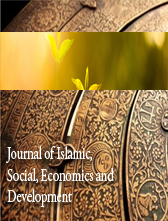CREDIT RISK POLICY 2019: IMPLEMENTATION OF MACHINE LEARNING FOR CREDIT RISK ASSESSMENT FOR MALAYSIAN CORPORATION
Abstract
The assessment of credit risk involves predicting loan default probability to evaluate risk. An incorrect decision poses potential risks to institutions. Advanced analytical tools are needed for more accurate predictive models. Researchers and practitioners focus on addressing these concerns. In 2019, Bank Negara Malaysia issued a Credit Risk policy urging the use of neural network models, such as machine learning and deep learning. This study evaluates the performance of these models for credit risk assessment using a dataset of Malaysian public listed corporations in three sectors: industrial products, consumer products, and construction. Four machine learning techniques (logistic regression, support vector machine, decision tree, and neural network), and three deep learning techniques (recurrent neural network, long short-term memory, and gated recurrent unit) were used. The support vector machine achieved the highest accuracy of 91.5% and 92.1% F1 score. This study demonstrates that machine learning can produce accurate results exceeding 90% accuracy and F1 score. Further improvements in machine learning and deep learning performance can be achieved through parameter manipulation and more data.













